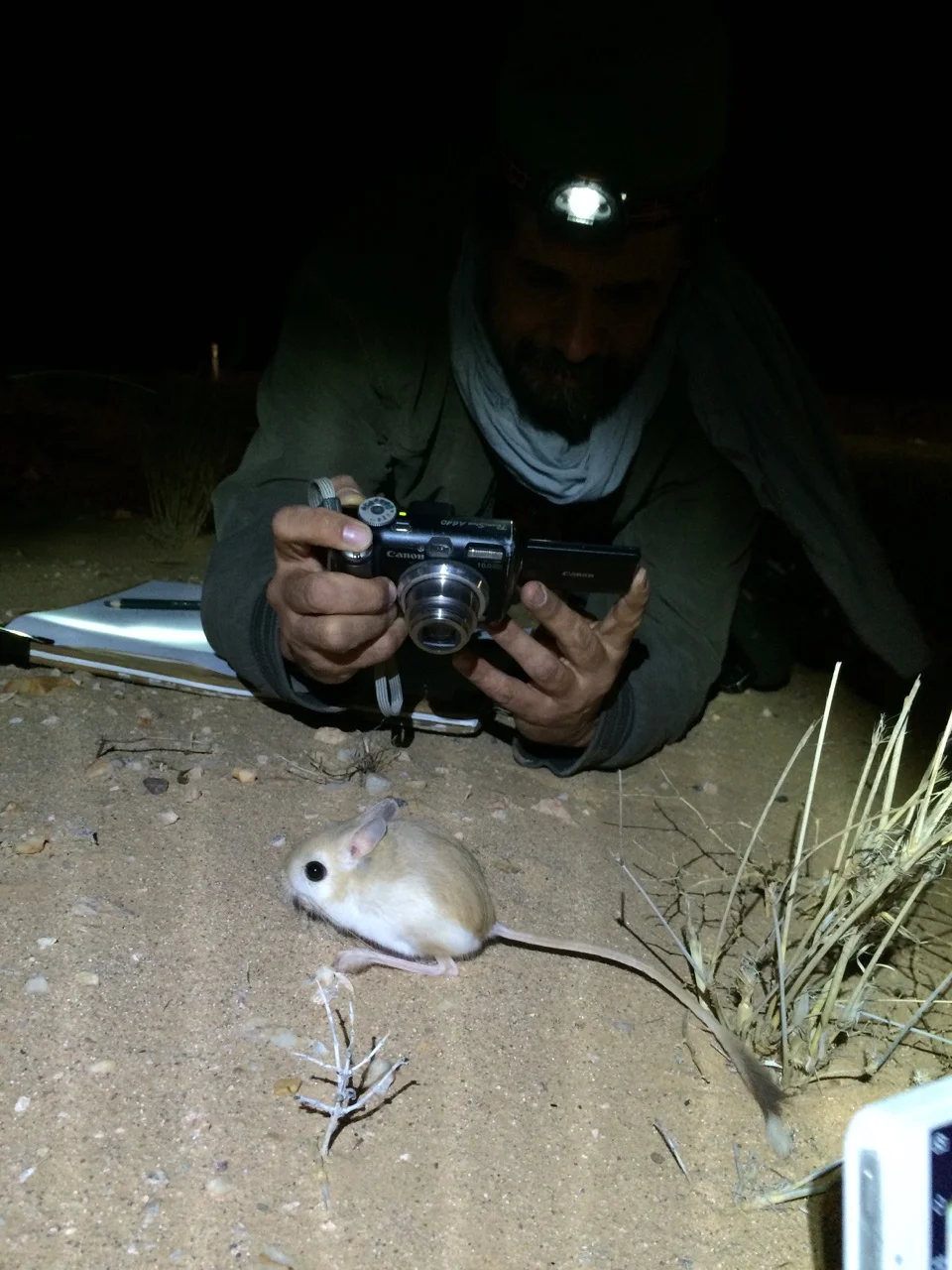Uncovering the Deserts Secrets; Exploring Western Sahara’s Remote Massifs
Photo: Oued and massifs in Western Sahara
In March, several members of the BiOME team return to Western Sahara to collect our Minox camera traps from a variety of locations in the interior of this Moroccan territory. These camera traps have been in-situ for exactly one year; this being the first time that prolonged camera trapping has occurred in this region. Rapid assessment using the same method over a shorter period last year provided an exciting taster to what species may still occur in the massifs and oueds of this corner of the Sahara. African Golden Wolf Canis anthus and African Wildcat Felis silvestris lybica were among an impressive list of mammals captured; what will 2016 deliver?
Photo: Lesser Egyptian Jerboa Jaculus jaculus
In addition, we are hoping to further our knowledge of bats in the region. Having previously discovered two species new to Western Sahara in 2015, Egyptian Free-tailed Bat Tadarida aegyptiaca and Egyptian Mouse-tailed Bat Rhinopoma cystops, BiOME will be looking once more for new species and new locations. This expedition is also serving as a reconnaissance mission as we push deeper into the interior of Western Sahara to a series of massifs almost completely unexplored by ecologists. The potential for discovery in this area is huge and we will keep you updated. We will be re-deploying the camera traps in these massifs with the hope of recording Barbary Sheep Ammotragus lervia, a caprid on the verge of extinction in Western Sahara.
Photo: BiOMEs Richard Moores examining a male Egyptian Free-tailed Bat Tadarida aegyptiaca in 2015
Photo: BiOME bat researcher examing Egyptian Free-tailed Bat Tadarida aegyptiaca
Finally we will be putting the finishing logistical touches to our comprehensive cetacean survey of Dakhla Bay which will run in 2017. This is will be first survey since 1998 and will be critical in establishing the status of Atlantic Humpback Dolphin Sousa teuszii in the bay, a species on the verge of extinction at its northern-most global outpost in this location.
Watch this space!




